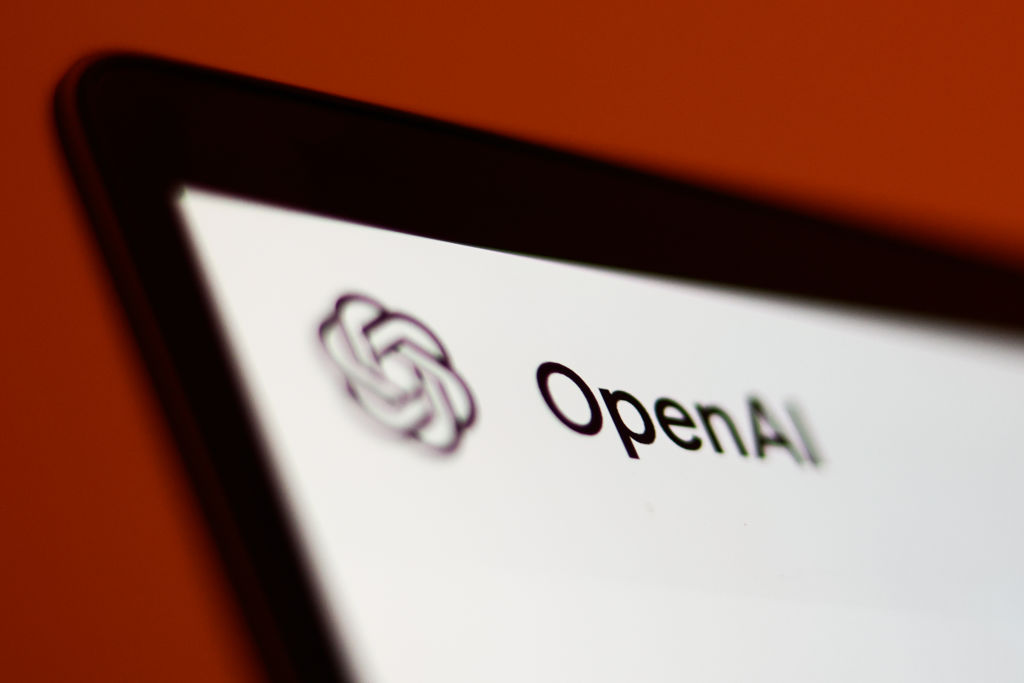
OpenAI Acquisition Strategy AI Coding Tools: From Cursor Talks to $3B Windsurf Deal
OpenAI Acquisition Strategy AI Coding Tools: From Cursor Talks to $3B Windsurf Deal
Table of Contents
- OpenAI’s Failed Acquisition Talks with Cursor Creator Anysphere
- The $3 Billion Windsurf Acquisition Strategy
- Why AI Coding Tools Matter in OpenAI’s Strategy
- Revenue Comparison: Cursor vs. Windsurf
- OpenAI’s Own Solution: Codex CLI and Market Positioning
- AI Coding Tools Market Analysis and Future Outlook
- Industry Implications of OpenAI’s Acquisition Strategy
OpenAI’s Failed Acquisition Talks with Cursor Creator Anysphere
When news broke that OpenAI was in talks to acquire AI coding company Windsurf for a staggering $3 billion, industry observers immediately questioned why the ChatGPT maker hadn’t pursued Cursor creator Anysphere instead. This curiosity was well-founded, considering OpenAI’s existing relationship with Anysphere through its Startup Fund, which has been an investor since Cursor’s seed round in late 2023.
The Cursor Connection
According to a recent CNBC report, OpenAI did in fact approach Anysphere (commonly known by its product name, Cursor) twice about a potential acquisition – first in 2024 and again earlier this year. These talks were part of OpenAI’s acquisition strategy for AI coding tools, but ultimately failed to materialize into a deal.
The failure of these negotiations is particularly noteworthy given OpenAI’s subsequent pivot to Windsurf. Sources familiar with the matter suggest that valuation expectations may have been a sticking point, as Anysphere has reportedly been in talks to raise capital at a valuation of approximately $10 billion – significantly higher than the reported $3 billion OpenAI is considering for Windsurf.
This sequence of events provides valuable insight into OpenAI’s acquisition strategy for AI coding tools, suggesting a willingness to invest substantially in this sector but with clear limits on valuation expectations. The company appears to be taking a pragmatic approach to building its AI coding portfolio, balancing strategic importance with financial considerations.
The $3 Billion Windsurf Acquisition Strategy
After failed talks with Anysphere, OpenAI turned its attention to Windsurf, with reports indicating that the company is in advanced discussions for an acquisition valued at around $3 billion. This potential deal marks a significant strategic move in OpenAI’s acquisition strategy for AI coding tools and signals the company’s determination to establish a strong foothold in the code generation market.
Windsurf at a Glance
- Current annualized recurring revenue (ARR): Approximately $40 million
- Implied valuation multiple: ~75x ARR (based on the reported $3B acquisition price)
- Primary product focus: AI-powered coding assistance tools
- Competitive positioning: Emerging challenger in the AI coding assistant space
- Market momentum: Growing user base among developers and engineering teams
The substantial valuation multiple – approximately 75 times Windsurf’s current ARR – highlights the premium OpenAI is willing to pay as part of its acquisition strategy for AI coding tools. This aggressive pricing strategy reflects both the scarcity of established players in the AI coding assistant market and OpenAI’s strategic imperative to secure a competitive position in this rapidly growing segment.
Industry analysts suggest that by pursuing Windsurf, OpenAI is not only acquiring technology and intellectual property but also securing an established user base and distribution channel for its AI coding capabilities. This “buy rather than build” approach may accelerate OpenAI’s market penetration in the developer tools segment far more rapidly than organic growth alone.
Why AI Coding Tools Matter in OpenAI’s Strategy
OpenAI’s persistent pursuit of AI coding tool companies – first Cursor and then Windsurf – underscores the strategic importance of code generation capabilities within the company’s broader portfolio. This focus is a central element of OpenAI’s acquisition strategy for AI coding tools and reflects several key strategic imperatives.
Strategic Value of AI Coding Tools for OpenAI
- Developer ecosystem expansion: Securing a strong position in developer workflows creates a strategic foothold in a high-value user segment
- Recurring revenue streams: Coding assistants typically operate on subscription models, providing stable, predictable revenue
- Technical talent acquisition: Acquisitions bring specialized engineering teams with expertise in applying AI to programming challenges
- Data advantages: Access to code repositories and developer behavior provides valuable training data for future AI models
- Enterprise penetration: Coding tools serve as an entry point for broader enterprise adoption of AI technologies
The code generation market represents a particularly strategic segment for AI companies like OpenAI because it addresses a clear, well-defined use case with demonstrable productivity benefits. Unlike some more speculative AI applications, coding assistants can demonstrate immediate ROI through metrics like development time reduction and code quality improvements.
Furthermore, coding tools target a user base of developers and engineers who are typically early adopters of new technologies and can become influential advocates within their organizations. This makes an acquisition strategy for AI coding tools particularly valuable as part of OpenAI’s broader market penetration efforts.
Revenue Comparison: Cursor vs. Windsurf
A comparison of the financial profiles of Cursor and Windsurf provides further context for understanding OpenAI’s acquisition strategy for AI coding tools. According to industry reports, there are significant differences in the current revenue generation capabilities of these two potential acquisition targets.
| Company | Estimated Annual Recurring Revenue | Reported/Rumored Valuation | Implied Multiple |
|---|---|---|---|
| Anysphere (Cursor) | ~$200 million | ~$10 billion | 50x ARR |
| Windsurf | ~$40 million | ~$3 billion | 75x ARR |
This financial comparison reveals an interesting dimension of OpenAI’s acquisition strategy for AI coding tools. While Cursor generates substantially higher revenue – approximately 5 times that of Windsurf – its rumored valuation expectations of $10 billion may have been prohibitively high, even for a company with OpenAI’s resources and market capitalization.
The willingness to pay a higher revenue multiple for Windsurf (75x vs. 50x for Cursor) suggests that OpenAI sees additional strategic value beyond current revenue metrics. This could include factors such as technology compatibility, team integration potential, or specific intellectual property that aligns particularly well with OpenAI’s future roadmap.
OpenAI’s Own Solution: Codex CLI and Market Positioning
Even as OpenAI pursues acquisitions in the coding tools space, the company has not been idle in developing its own solutions. On Wednesday, OpenAI released Codex CLI, an open-source coding tool for terminals that can write and edit code. This development adds another dimension to understanding the company’s acquisition strategy for AI coding tools.
Codex CLI vs. Acquisition Strategy
OpenAI’s simultaneous pursuit of internal development (Codex CLI) and external acquisition (Windsurf talks) suggests a multi-pronged approach to the AI coding market. Rather than being mutually exclusive strategies, these efforts appear complementary – addressing different segments of the market, time horizons, and risk profiles.
The timing of Codex CLI’s release – coinciding with reports of the Windsurf acquisition talks – is particularly noteworthy. It suggests that while OpenAI sees value in developing its own coding solutions, the company recognizes that organic growth alone may not be sufficient to establish the market position it desires in the competitive AI coding tools landscape.
Industry analysts interpret OpenAI’s parallel initiatives as acknowledgment that the window for establishing market leadership in AI coding tools is limited. By pursuing both internal development and strategic acquisitions as part of its acquisition strategy for AI coding tools, OpenAI appears to be hedging its bets and maximizing its chances of success in this strategic market segment.
AI Coding Tools Market Analysis and Future Outlook
OpenAI’s aggressive acquisition strategy for AI coding tools reflects the company’s assessment of the significant market opportunity in this segment. The AI coding assistant market is experiencing rapid growth, driven by several converging factors that make this an attractive space for investment and acquisition.
AI Coding Tools Market Drivers
- Developer productivity demand: Growing pressure to accelerate software development cycles
- Developer shortage: Global shortage of skilled programmers increasing the value of productivity tools
- AI model advancements: Recent improvements in code generation capabilities of large language models
- Proven use case: Code completion and generation represent one of the most practical and immediately valuable applications of AI
- Subscription economics: Developer tools typically feature high retention rates and strong unit economics
Market analysts project that the global AI coding assistant market could grow to over $15 billion by 2030, representing a compound annual growth rate exceeding 35%. This growth trajectory makes coding tools one of the fastest-expanding segments within the broader AI market – explaining OpenAI’s determined acquisition strategy for AI coding tools.
The competitive landscape is also evolving rapidly, with both specialized startups like Cursor and Windsurf and larger technology players like GitHub (Microsoft), JetBrains, and Google all competing for developer mindshare. OpenAI’s acquisition moves suggest recognition that establishing market leadership may require both technological excellence and substantial market presence – difficult to achieve through organic growth alone in a rapidly maturing market.
Industry Implications of OpenAI’s Acquisition Strategy
OpenAI’s acquisition strategy for AI coding tools has broader implications for the AI industry, particularly in how it signals the company’s evolving business model and competitive positioning. Several key trends and strategic shifts are becoming apparent through these acquisition moves.
Strategic Implications
OpenAI’s pursuit of coding tool companies indicates a strategic evolution beyond being merely an AI research lab or API provider. The company appears to be vertically integrating into specific high-value application areas, suggesting a more direct competitive stance toward specialized AI application providers across various sectors.
For investors and startups in the AI space, OpenAI’s willingness to pay premium valuations for strategic acquisitions potentially signals a new phase of industry consolidation. This could accelerate funding for startups that demonstrate traction in specific AI application niches, as founders and investors anticipate potential acquisition interest from major players like OpenAI, Microsoft, Google, and Amazon.
For enterprise customers, the implications are mixed. On one hand, acquisition-driven consolidation may lead to more integrated AI solutions with better interoperability. On the other hand, reduced competition could eventually impact pricing and innovation dynamics. OpenAI’s acquisition strategy for AI coding tools may foreshadow similar consolidation in other AI application categories as the technology continues to mature.
As OpenAI continues to execute its acquisition strategy, the industry will be watching closely to see how successfully the company integrates these tools into its broader product ecosystem and whether it can translate its investments into sustainable competitive advantages in the rapidly evolving AI landscape.





